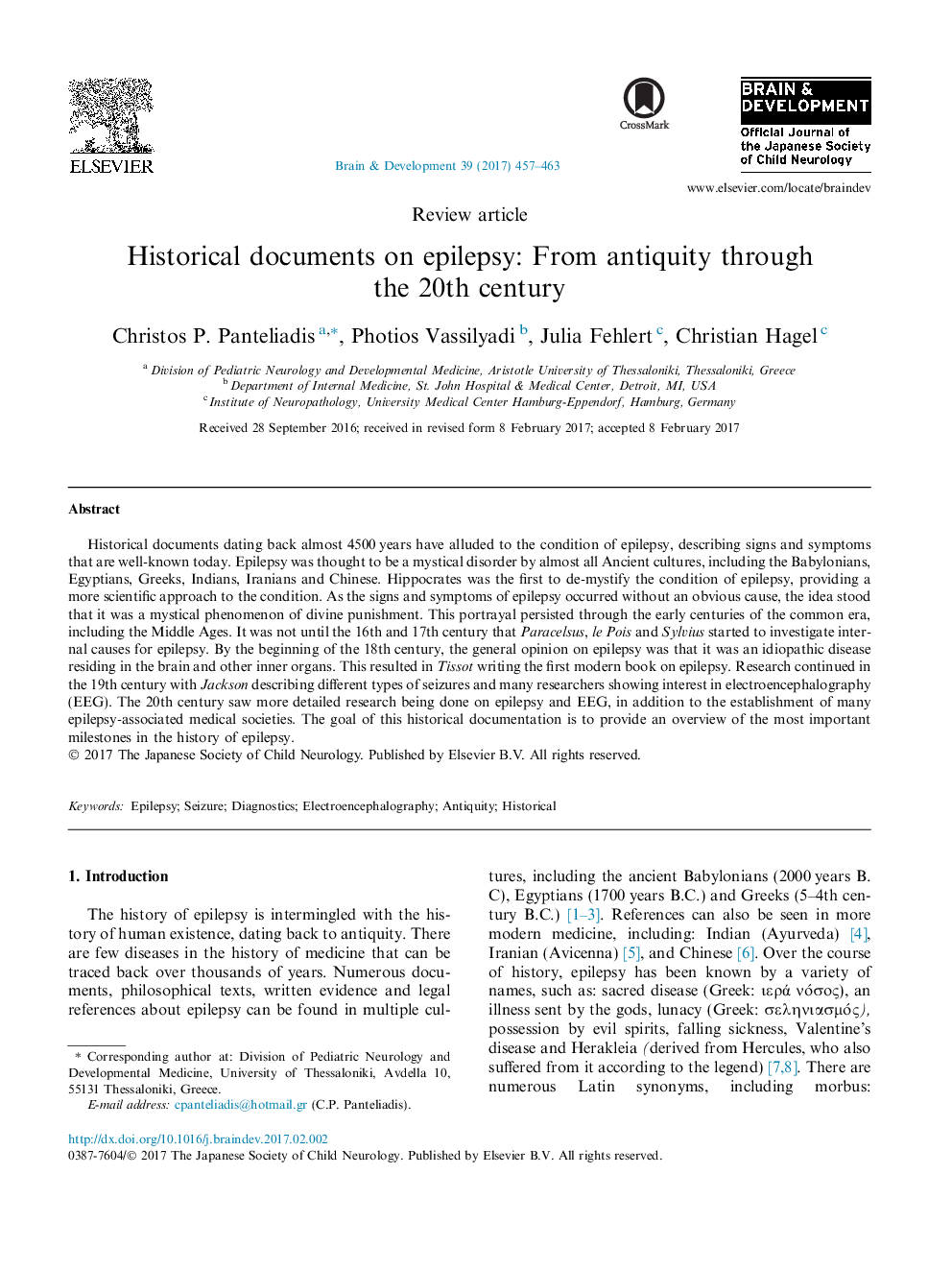| کد مقاله | کد نشریه | سال انتشار | مقاله انگلیسی | نسخه تمام متن |
|---|---|---|---|---|
| 5626465 | 1406323 | 2017 | 7 صفحه PDF | دانلود رایگان |
Historical documents dating back almost 4500Â years have alluded to the condition of epilepsy, describing signs and symptoms that are well-known today. Epilepsy was thought to be a mystical disorder by almost all Ancient cultures, including the Babylonians, Egyptians, Greeks, Indians, Iranians and Chinese. Hippocrates was the first to de-mystify the condition of epilepsy, providing a more scientific approach to the condition. As the signs and symptoms of epilepsy occurred without an obvious cause, the idea stood that it was a mystical phenomenon of divine punishment. This portrayal persisted through the early centuries of the common era, including the Middle Ages. It was not until the 16th and 17th century that Paracelsus, le Pois and Sylvius started to investigate internal causes for epilepsy. By the beginning of the 18th century, the general opinion on epilepsy was that it was an idiopathic disease residing in the brain and other inner organs. This resulted in Tissot writing the first modern book on epilepsy. Research continued in the 19th century with Jackson describing different types of seizures and many researchers showing interest in electroencephalography (EEG). The 20th century saw more detailed research being done on epilepsy and EEG, in addition to the establishment of many epilepsy-associated medical societies. The goal of this historical documentation is to provide an overview of the most important milestones in the history of epilepsy.
Journal: Brain and Development - Volume 39, Issue 6, June 2017, Pages 457-463
